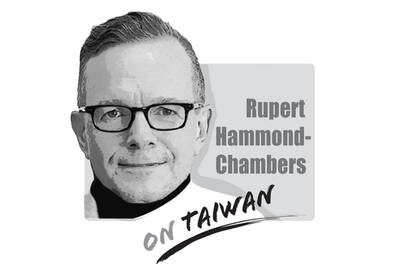If a tree falls in a forest and no one is around to hear it, yes, it does make a sound. By the same token, a secret deal struck between two parties without other parties or the public being informed can have a very real impact. And if a memorandum of understanding (MOU) is signed between Beijing and the WHO without Taiwan being consulted, it very clearly exists.
President Ma Ying-jeou’s (馬英九) statement on Monday to the contrary was, to put it bluntly, dumbfounding.
China’s “secret” MOU with the WHO is hardly secret — and both the Ministry of Foreign Affairs and the Department of Health have no problem acknowledging the existence of this document, which reportedly stipulates that communication between the WHO and Taiwan can only take place with Beijing’s consent.
After Presidential Office Spokesman Wang Yu-chi (王郁琦) said earlier this month that the Presidential Office was unsure whether the MOU existed, Ma made similar remarks on Monday, questioning the former Democratic Progressive Party (DPP) administration’s claim that an MOU was signed.
“We are uncertain whether China signed an MOU with the WHO ... but because [the Chinese Nationalist Party (KMT)] was not in power at the time, we have no way of finding out,” Ma said in an interview with Taiwan’s China Television.
In light of past statements by officials in his administration, including Department of Health Minister Yeh Ching-chuan (葉金川) and Deputy Minister of Foreign Affairs Andrew Hsia (夏立言), Ma was setting himself up for trouble. Given their open and unambiguous discussion of the MOU, the president must have had a clear motive for an about-face that could only make him look disingenuous.
It seems unlikely that Ma or any other top figure in the KMT would doubt the MOU’s existence. In 2005, then-director of the KMT’s Mainland Affairs Department Chang Jung-kung (張榮恭) was quoted by several media outlets, including the Central News Agency, as saying that he had been informed of the MOU’s contents by Taiwan-related agencies in China. The MOU took effect on May 14, 2005, Chang told the media.
But the evidence doesn’t stop there. Although the MOU has never formally been made public, WHO Director-General Margaret Chan (陳馮富珍) mentioned the document in an interview with China’s state-run Xinhua news agency.
“On Taiwan’s participation in the WHO’s technical activities, Chan said the WHO would deal with the issue in accordance with a Memorandum of Understanding (MoU) signed with China,” Xinhua reported on Nov. 27, 2006. “The MoU on Taiwan health and medical experts’ participation in WHO technical activities was signed between the Chinese Ministry of Health and the WHO Secretariat in 2005.”
“Facts show that the memorandum has played a positive role,” said Chan, then newly elected as the world health body’s director-general.
No one, it would seem, is denying the existence of the MOU except the Presidential Office. The goal, it seems, is to convince the public that Taiwan’s admittance to the World Health Assembly as an observer this year was not achieved through Beijing, as would be required by the MOU.
But traces of the MOU are everywhere. The question is what the president stands to gain from squandering his credibility.
The gutting of Voice of America (VOA) and Radio Free Asia (RFA) by US President Donald Trump’s administration poses a serious threat to the global voice of freedom, particularly for those living under authoritarian regimes such as China. The US — hailed as the model of liberal democracy — has the moral responsibility to uphold the values it champions. In undermining these institutions, the US risks diminishing its “soft power,” a pivotal pillar of its global influence. VOA Tibetan and RFA Tibetan played an enormous role in promoting the strong image of the US in and outside Tibet. On VOA Tibetan,
Sung Chien-liang (宋建樑), the leader of the Chinese Nationalist Party’s (KMT) efforts to recall Democratic Progressive Party (DPP) Legislator Lee Kun-cheng (李坤城), caused a national outrage and drew diplomatic condemnation on Tuesday after he arrived at the New Taipei City District Prosecutors’ Office dressed in a Nazi uniform. Sung performed a Nazi salute and carried a copy of Adolf Hitler’s Mein Kampf as he arrived to be questioned over allegations of signature forgery in the recall petition. The KMT’s response to the incident has shown a striking lack of contrition and decency. Rather than apologizing and distancing itself from Sung’s actions,

US President Trump weighed into the state of America’s semiconductor manufacturing when he declared, “They [Taiwan] stole it from us. They took it from us, and I don’t blame them. I give them credit.” At a prior White House event President Trump hosted TSMC chairman C.C. Wei (魏哲家), head of the world’s largest and most advanced chip manufacturer, to announce a commitment to invest US$100 billion in America. The president then shifted his previously critical rhetoric on Taiwan and put off tariffs on its chips. Now we learn that the Trump Administration is conducting a “trade investigation” on semiconductors which
By now, most of Taiwan has heard Taipei Mayor Chiang Wan-an’s (蔣萬安) threats to initiate a vote of no confidence against the Cabinet. His rationale is that the Democratic Progressive Party (DPP)-led government’s investigation into alleged signature forgery in the Chinese Nationalist Party’s (KMT) recall campaign constitutes “political persecution.” I sincerely hope he goes through with it. The opposition currently holds a majority in the Legislative Yuan, so the initiation of a no-confidence motion and its passage should be entirely within reach. If Chiang truly believes that the government is overreaching, abusing its power and targeting political opponents — then